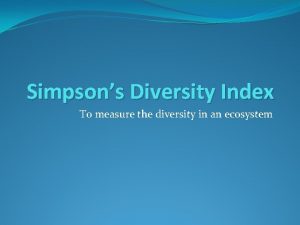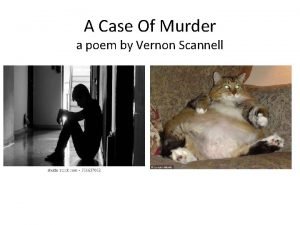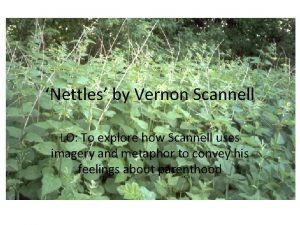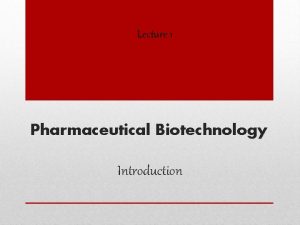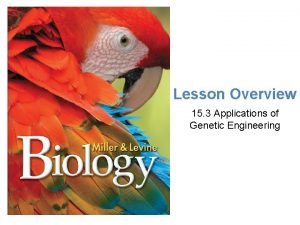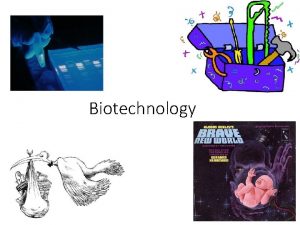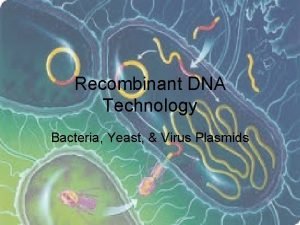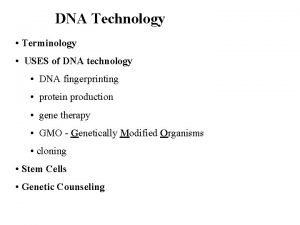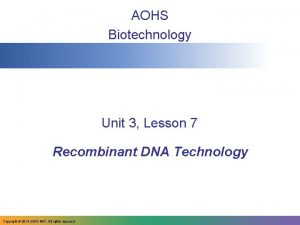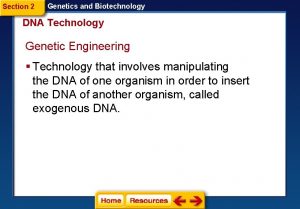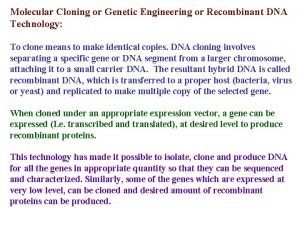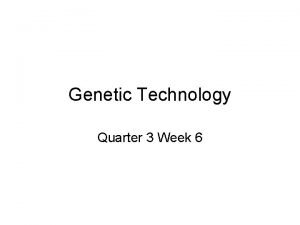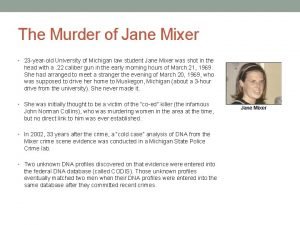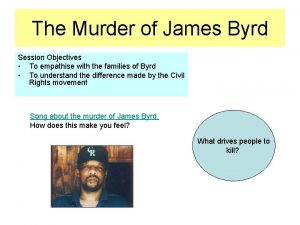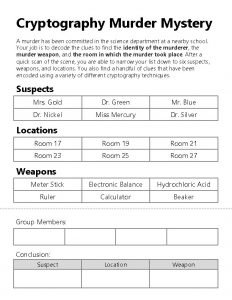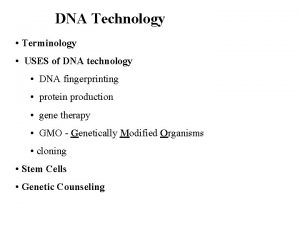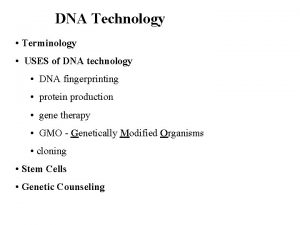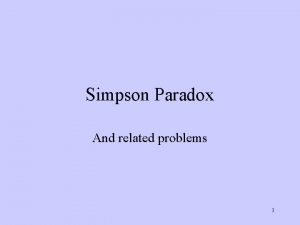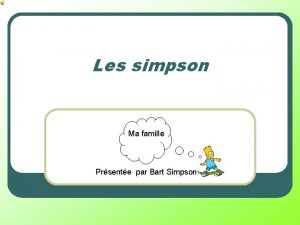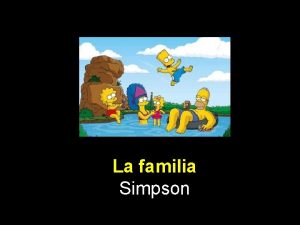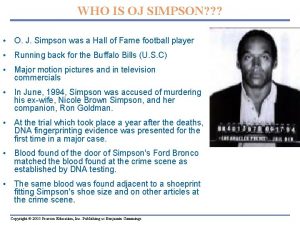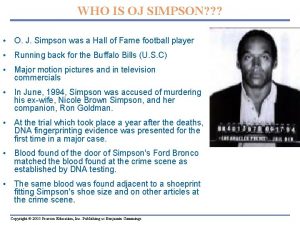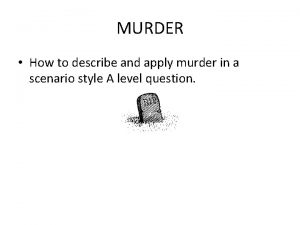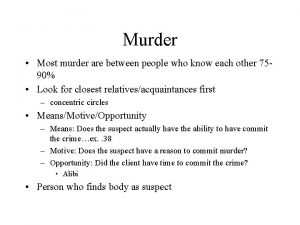DNA TECHNOLOGY O J Simpson capital murder case







































- Slides: 39

DNA TECHNOLOGY

O. J. Simpson capital murder case, 1/95 -9/95 Odds of blood in Ford Bronco not being R. Goldman’s: n 6. 5 billion to 1 n Odds of blood on socks in bedroom not being N. Brown-Simpson’s: n 8. 5 billion to 1 Odds of blood on glove not being from R. Goldman, N. Brown-Simpson, and O. J. Simpson: n 21. 5 billion to 1 n Number of people on planet earth: n 6. 1 billion n Odds of being struck by lightning in the U. S. : n 2. 8 million to 1 n Odds of winning the Georgia’s Big Game lottery: n 76 million to 1 n Odds of getting killed driving to the gas station to buy a lottery ticket n 4. 5 million to 1 n Odds of seeing 3 albino deer at the same time: n 85 million to 1 n Odds of having quintuplets: n 85 million to 1 n Odds of being struck by a meteorite: n 10 trillion to 1 n n

Biotechnology, defined broadly, is the engineering of organisms for useful purposes. Often, biotechnology involves the creation of hybrid genes and their introduction into organisms in which some or all of the gene is not normally present. Recombinant DNA is DNA in which genes from 2 different sources are linked. Fourteen month-old genetically engineered (“biotech”) salmon (left) and standard salmon (right).

Manipulating Genes DNA Technology can be used to: *cure diseases *to treat genetic disorders *to improve food crops *and to improve the lives of humans n

Biotechnology Tools Restriction Enzymes- used to isolate a specific gene n Cloning Vectors- a carrier that is used to clone a gene and transfer it from one organism to another. Example: Plasmid n

Plasmids are Used to Replicate a Recombinant DNA *Plasmids are small circles of DNA found in bacteria. *Plasmids replicate independently of the bacterial chromosome. *Pieces of foreign DNA can be added within a plasmid to create a recombinant plasmid. *Replication often produces 50 -100 copies of a recombinant plasmid in each cell.

Restriction Enzymes are Enzymes That Cut DNA Only at Specific Sequences Restriction enzyme animation The enzyme Eco. RI cutting DNA at its recognition sequence Different restriction enzymes have different recognition sequences. This makes it possible to create a wide variety of different gene fragments.

Forming Recombinant DNA using Restriction Enzymes:

Harnessing the Power of Recombinant DNA Technology – Human Insulin Production by Bacteria

Human Insulin Production by Bacteria and cut with a restriction enzyme 6) join the plasmid and human fragment

Human Insulin Production by Bacteria Mix the recombinant plasmid with bacteria.

Route to the Production by Bacteria of Human Insulin One cell with the recombinant plasmid This is the step when gene cloning takes place. A fermentor used to grow recombinant bacteria. The single recombinant plasmid replicates within a cell. Then the single cell with many recombinant plasmids produces trillions of like cells with recombinant plasmid – and the human insulin gene.

Route to the Production by Bacteria of Human Insulin The final steps are to collect the bacteria, break open the cells, and purify the insulin protein expressed from the recombinant human insulin gene.

Bacterial plasmids in gene cloning

DNA Technology Tools…. Polymerase Chain Reaction (DNA copying) n Gel Electrophoresis n DNA Fingerprinting n Cloning n

Copying DNA n n n Polymerase Chain Reaction Also called PCR A method of making many copies of a piece of DNA

Steps in Copying DNA • • A DNA molecule is placed in a small test tube DNA polymerase that can work at high temps is added

Steps in Copying DNA n The DNA is heated to separate the two strands n Primers, short pieces of DNA complementary to the ends of the molecule to be copied, are added

Copying DNA • The tube is cooled, and DNA polymerase adds new bases to the separated strands

PCR Large amounts of DNA can be made from a small starting sample

Electrophoresis n n n DNA can be separated based on size and charge The phosphate groups are negatively charged DNA is placed in a gel and electricity is run through

Electrophoresis Negative DNA moves toward the positive end n Smaller fragments move farther and faster n

Electrophoresis

DNA Fingerprinting DNA is now a powerful tool in identification. Based on the fact that the amount of "junk DNA" differs uniquely between individuals. Structural genes are often separated by large regions of repeating basepairs. The number of these repeats is unique to an individual. Therefore when DNA from a person is cut with a restriction enzyme, the length of the fragments will be unique to an individual.

DNA Fingerprinting Continued… n This will therefore produce a unique banding pattern following a gel electrophoresis. n This test is highly accurate, and the probability of another individual possessing an identical banding pattern

DNA Fingerprinting

DNA Fingerprint EV shows the DNA at a crime scene. Samples 1 -5 were taken and analyzed from suspects. Based on this evidence, which suspect is guilty?

Cloning n Cloning is the process of making a genetically identical organism through nonsexual means. It has been used for many years to produce plants (even growing a plant from a cutting is a type of cloning). Animal cloning has been the subject of scientific experiments for years, but garnered little attention until the birth of the first cloned mammal in 1997, a sheep named Dolly. Since Dolly, several scientists have cloned other animals, including cows and mice. The recent success in cloning animals has sparked fierce debates among scientists, politicians and the general public about the use and morality of cloning plants, animals and Dolly, the first mammal clone

This shows how a common type of reproductive cloning works:

Dolly the Sheep Dolly died in 2003. This was due to lung disease and crippling arthritis. Most sheep can live 11 -12 years. Dolly was 6. 5 years old.

Human Genome Project Started in 1990 -finished in 2003 n Research effort to sequence all of our DNA (46 chromosomes) n Over 3. 3 billion nucleotides in roughly 26, 000 genes n Mapping every gene location (loci) n Conducted by scientists around the world n

HGP Insights…what they learned n n n Only 2% of human genome codes for proteins (exons) Other 98% (introns) are noncoding Only about 26, 000 genes (expected 100, 000) Proteome – organism’s complete set of proteins About 8 million single nucleotide polymorphisms (SNP) – places where humans differ by a single nucleotide

Benefits of Human Genome Project n n n Improvements in medical prevention of disease, gene therapies, diagnosis techniques … Production of useful protein products for use in medicine, agriculture, bioremediation and pharmaceutical industries. Improved bioinformatics – using computers to help in DNA sequencing …

Gene Therapy Gene therapy can be used to treat some genetic disorders. It is utilized when a a defective “unhealthy” gene is replaced with normal “healthy” gene. Here are some diseases that gene therapy may help with more research: n n n Cystic fibrosis Hemophilia Lung Cancer AIDS Ovarian Cancer Brain tumors

Example of gene therapy 1. Insert DNA version of normal allele into virus. Insert a gene into an inactivated or nonvirulent virus and use the virus's infective capabilities to carry the desired gene into the patient's cells. 2. Let virus infect bone marrow cells that have been removed from the patient and cultured. 3. Viral DNA carrying the normal allele inserted into chromosome.

What factors have kept gene therapy from becoming an effective treatment for genetic disease? n n n Immune response Problems with viral vectors Multigene disorders

Biotechnology n The use of gene science to create new products from plants and animals Biotechnology Provides: Improved food products Medical advances

Biotechnology Breakthroughs…. n n Insulin (1982) n First commercial biotech product n Reliable, inexpensive source of insulin Rice n Enriched with beta-carotene and iron n Bananas n Containing edible hepatitis vaccine Potatoes with higher solid content n Garlic that lowers cholesterol n n Fruits and vegetables that reduce risks of cancer and heart disease

Herbicide Resistant Crops + CP 4 EPSPS = Roundup gene Ready n n Soybeans: Roundup Ready Corn: Roundup Ready, Liberty Link Cotton: BXN, Roundup Ready Canola: Liberty Link, Roundup Ready
 Simpsons diversity index equation
Simpsons diversity index equation A case of murder vernon
A case of murder vernon Nettles vernon scannell
Nettles vernon scannell Best worst and average case
Best worst and average case Oj simpson case study
Oj simpson case study Replication
Replication Bioflix activity dna replication nucleotide pairing
Bioflix activity dna replication nucleotide pairing Coding dna and non coding dna
Coding dna and non coding dna What role does dna polymerase play in copying dna?
What role does dna polymerase play in copying dna? Chapter 11 dna and genes
Chapter 11 dna and genes Net working capital refers to which of the following
Net working capital refers to which of the following Source of capital reserve
Source of capital reserve Multinational cost of capital and capital structure
Multinational cost of capital and capital structure Difference between capital reserve and reserve capital
Difference between capital reserve and reserve capital Regulatory capital vs economic capital
Regulatory capital vs economic capital Regulatory capital vs economic capital
Regulatory capital vs economic capital Constant capital and variable capital
Constant capital and variable capital Multinational cost of capital and capital structure
Multinational cost of capital and capital structure Capital allocation line vs capital market line
Capital allocation line vs capital market line Recombinant dna technology applications
Recombinant dna technology applications Recombinant dna technology applications
Recombinant dna technology applications Define recombinant dna technology
Define recombinant dna technology Complementary genes example
Complementary genes example Recombinant dna technology applications
Recombinant dna technology applications Which career combines dna technology and forensics
Which career combines dna technology and forensics Recombinant plasmid dna
Recombinant plasmid dna Recombinant dna technology
Recombinant dna technology Recombinant dna technology
Recombinant dna technology Recombinant dna technology applications
Recombinant dna technology applications Enzymes used in recombinant dna technology pdf
Enzymes used in recombinant dna technology pdf Recombinant dna technology applications
Recombinant dna technology applications The raven by edgar allan poe
The raven by edgar allan poe Jane mixer
Jane mixer Donald byrd murder
Donald byrd murder The murder of emmitt till date
The murder of emmitt till date Carol lynn benson miss florida
Carol lynn benson miss florida Murder on the orient express analysis
Murder on the orient express analysis Focus
Focus Murder and a meal
Murder and a meal A murder has been committed
A murder has been committed
